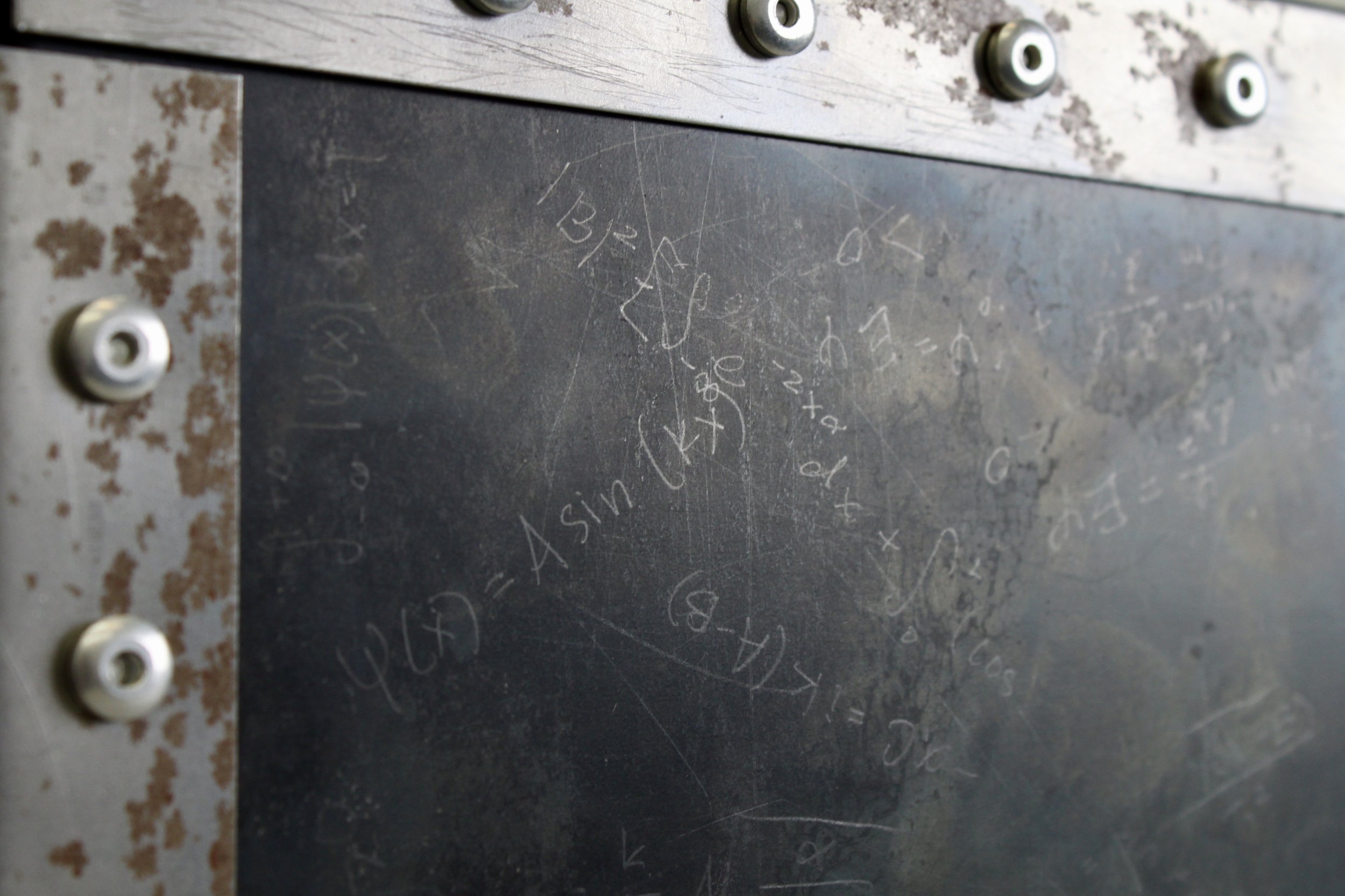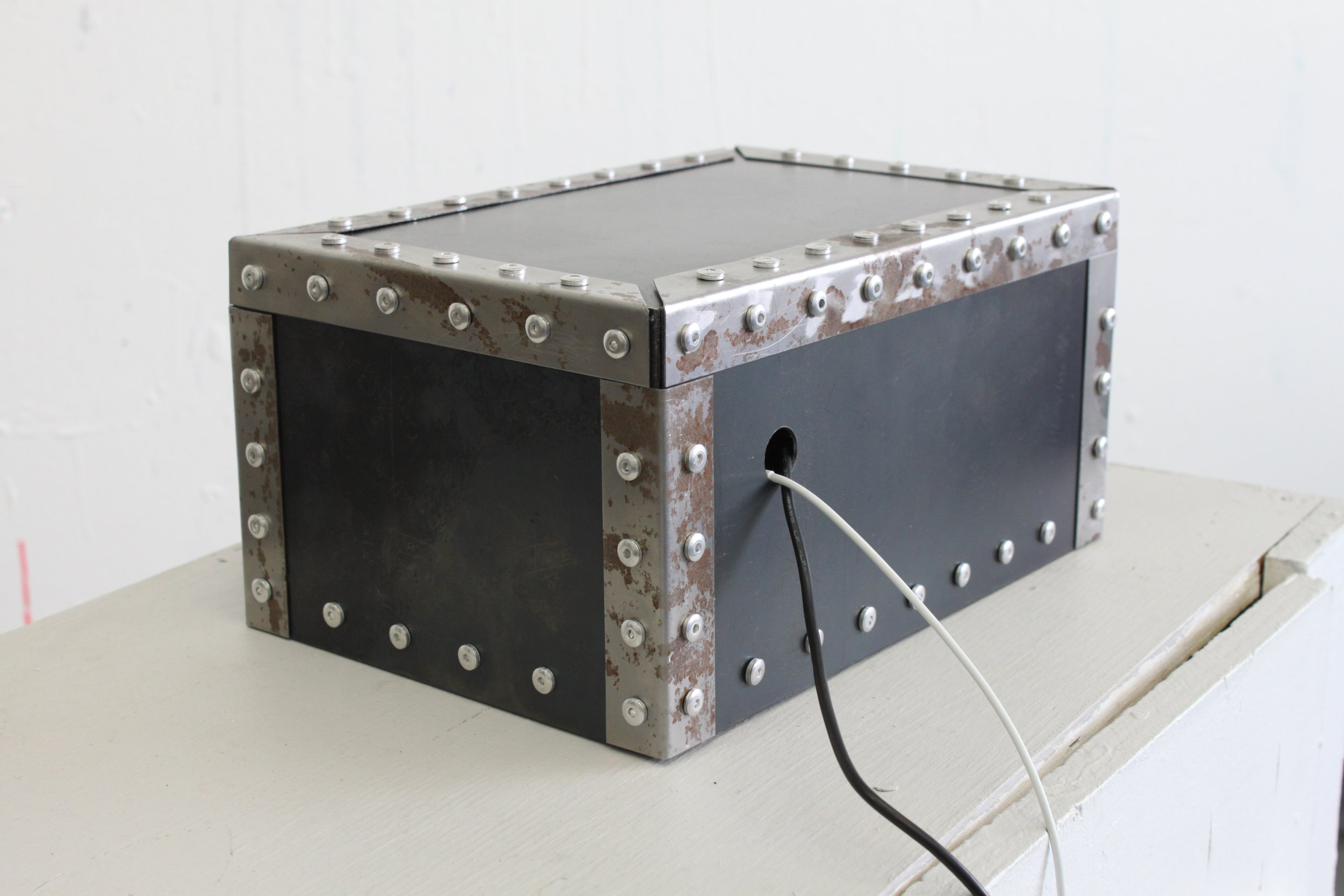Schrödinger’s Box was completed in December 2021 and displayed as my first semester capstone project as a Master of Fine Art student at the University of Calgary.
Artist Statement
Schrödinger’s Box is an intentionally overbuilt metal box, constructed with rolled sheet steel and over one hundred aluminum rivets. One side of the box has “breathing holes” drilled into the steel. The other sides and top of the box have the derivation and versions of the Schrödinger Equation (describing the wave function of a quantum-mechanical system) written in graphite on the steel. A programmable Raspberry Pi and speaker inside the box play audio of a cat meowing at a random interval between three and five minutes. Two cords powering the electronic devices enter/exit the box through a port drilled in one side. There is a hinged trap door on the bottom of the box (not intended to be seen/accessible to the viewer) to access the electronics inside.
This piece references the famous “Schrödinger’s Cat” thought experiment devised by Erwin Schrödinger in 1935. The thought experiment involves placing a cat in a box with radioactive material that (if and when it decays) will kill the cat. However, the observer does not know whether the cat is dead or alive until the box is opened. Schrödinger’s thought experiment illustrated controversies with the leading interpretation of quantum superposition at the time and is still relevant today, particularly when discussing “the measurement problem”: how observations may or may not change the outcome of experiments, and the limitations on us as observers and interpreters of the quantum world.
Regardless of the viewer’s prior knowledge of “Schrödinger’s Cat” or quantum mechanics, Schrödinger’s Box offers a perceptual experience of the abstract concepts we are confronted with in Schrödinger’s thought experiment. Is there a cat inside the box? The observations available to the viewer in attempt to answer this question are limited. We can hear the cat, but cannot see it. Ultimately, the box is “un-openable”: we will never be able to know what is really going on in the quantum world. All we can do is observe from the outside and theorize about what might be going on inside.



